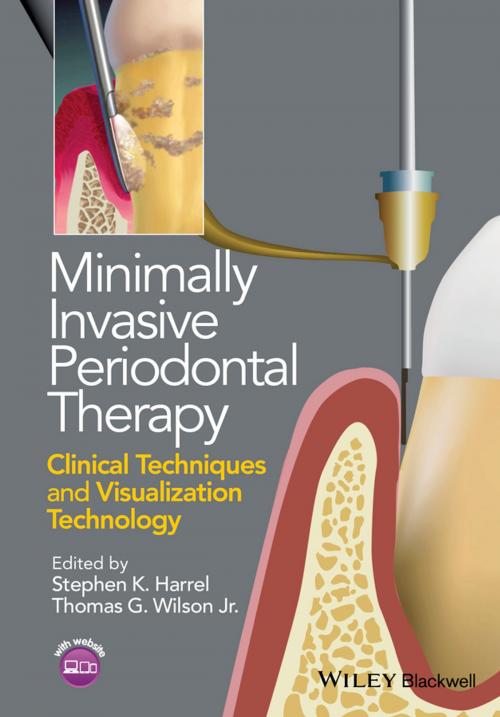Minimally Invasive Periodontal Therapy
Clinical Techniques and Visualization Technology
Nonfiction, Health & Well Being, Medical, Dentistry, Periodontics| Author: | Stephen K. Harrel, Thomas G. Wilson Jr. | ISBN: | 9781118953624 |
| Publisher: | Wiley | Publication: | December 1, 2014 |
| Imprint: | Wiley-Blackwell | Language: | English |
| Author: | Stephen K. Harrel, Thomas G. Wilson Jr. |
| ISBN: | 9781118953624 |
| Publisher: | Wiley |
| Publication: | December 1, 2014 |
| Imprint: | Wiley-Blackwell |
| Language: | English |
The long-term success of periodontal therapy is dependent on proper diagnosis and removal of subgingival tooth-borne accretions in the form of calculus and bacteria. From a clinical perspective, better visualization during the diagnostic and therapeutic phases has been shown to yield better results compared to traditional approaches.
Minimally Invasive Periodontal Therapy evaluates the advantages of using minimal invasive techniques, the technologies available for enhancing visualization during minimally invasive therapy, and step-by-step illustrates the clinical use of each technique. Each chapter addresses the advantages and disadvantages of minimally invasive therapies, rationale for the approach, and the advantages and limitations of each of the current methods of improving visualization. The chapters then provide an evidence-based review of the technologies and procedures, and end with case studies for each visualization procedure, featuring clinical photographs.
The long-term success of periodontal therapy is dependent on proper diagnosis and removal of subgingival tooth-borne accretions in the form of calculus and bacteria. From a clinical perspective, better visualization during the diagnostic and therapeutic phases has been shown to yield better results compared to traditional approaches.
Minimally Invasive Periodontal Therapy evaluates the advantages of using minimal invasive techniques, the technologies available for enhancing visualization during minimally invasive therapy, and step-by-step illustrates the clinical use of each technique. Each chapter addresses the advantages and disadvantages of minimally invasive therapies, rationale for the approach, and the advantages and limitations of each of the current methods of improving visualization. The chapters then provide an evidence-based review of the technologies and procedures, and end with case studies for each visualization procedure, featuring clinical photographs.















